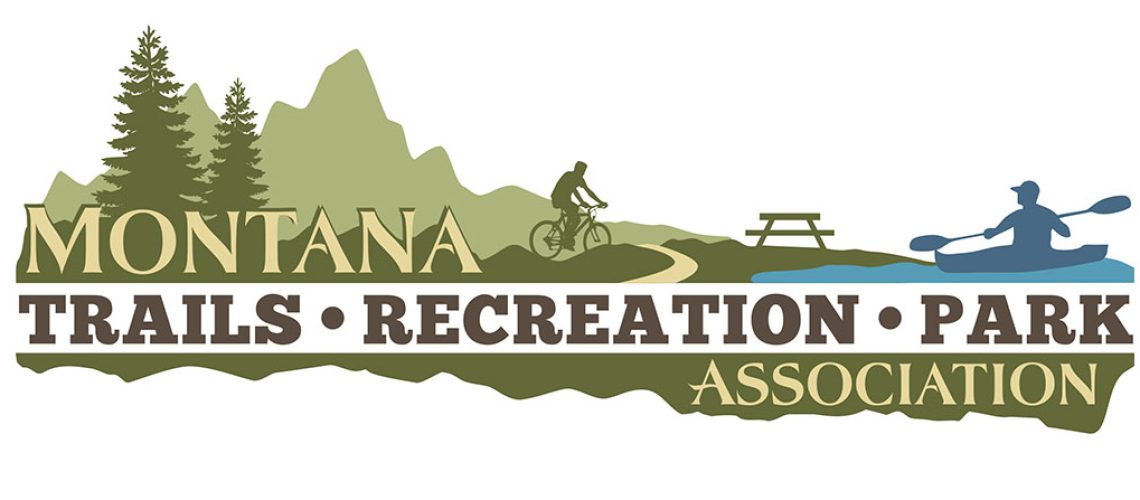Your Montana Trails Coalition and Montana Trails, Recreation and Parks Association keeps you informed and up-to-date about bills in the legislature that affect recreation and parks programs. This past two weeks have been extremely busy at the Capitol. Transmittal was March 3 which means general bills must be transmitted to the other chamber from which they originated. April 1 is Transmittal of Appropriation and Revenue Bills & Bills Proposing Referenda.
NOTE: SB means Senate bill, HB means House of Representatives bill, LC means a bill draft request has been submitted to Legislative Services.
RECREATION
HB 2 (Representative Jones): This bill covers requested appropriations for operations for state government including Fish, Wildlife & Parks (FWP) and State Parks. Included is the state Snowmobile Grant Program and equipment purchase. Includes $600,000 for the two year period for grooming equipment purchase and approximately $420,000 per year for grooming grants. These funds come from snowmobile registration fees and permits and some state gas tax funds. Hearings ongoing in House Appropriations Committee but positive so far.
HB 5 HB 5 (Representative Jones): Includes requested appropriations for capital projects for state government including FWP and state parks. Hearings ongoing in House Appropriations Committee but positive so far. Included are:
Recreational Trails Program: $1.5 million/year; $3 million for biennium
Source: Federal gas tax paid for gas used off road in off-highway vehicles
Montana Trail Stewardship Grant Program: $1.25 million/year; $2.5 million biennium
Source: Optional $9 on light motor vehicle registrations
OHV Grant Programs: 2grants total $445,000 /year; $ 890,000 biennium
Source: OHV registration decal, permit fees &state gas tax
Land & Water Conservation Fund: $1.5 million/year; $3 million biennium
Source: Federal funds from Great American Outdoors Act!
NOTE: Recreational Marijuana Sales Tax for Recreation and Conservation: Governor Gianforte recommended operating budget would divert all future revenue away from public trail grant programs, state parks maintenance, and the Habitat Montana Program. Initiative I 190, voted on and approved by the public in November would distribute the funds as follows: Habitat Montana: 37.125% (conservation easements, block management, fee title purchase, fishing access sites); State General Fund: 10.5%; Substance Abuse Services, Veterans Services, Senior & Disability Services, Local Governments: 10% each; State Parks, Trail Stewardship Grant Program, Nongame wildlife: 4.125 % each.
Governor Gianforte proposal for the use of these funds was:substance abuse: $12 million = 66.67%, and state general fund: $6 million = 33.33%.
Reports Wednesday, March 17, say that a bill carried by Representative Hopkins would allocate the first $6 million to a drug and addiction treatment program, 88% of the balance to the state general fund, , and 4% each to state parks, state trails grant program and non-game wildlife. The 4% each would be capped at $650,000 each. Unfortunately habitat Montana program are not included.
Please contact Representative Hopkins and Governor Gianforte and ask them to accept the will of the public and dedicate $49.5% of the I-190 funds to recreation, parks, conservation, and Habitat Montana!
NOTE: Stimulus Money: Analysts expect the state to see at least $2.7 billion to state and local governments on top of the $1,400 individual payments in relief money. Specifically it includes $298 million in budget relief to towns, cities and tribal governments. House Appropriations Committee Chair Llew Jones said money will be appropriated through a pending bill to be carried by Representative Garner that will focus on education, health care, and infrastructure. We hope that some of the infrastructure money will be dedicated to park, recreation, and trail infrastructure projects since they all have direct benefits to the physical and mental health of the public!
HB 184 (Representative Loge): Would revise bicycle safety laws including the wearing of high visibility colors, ride on the right had half of the right lane, illuminated lamps, 5’ safe passing distance. Passed 3rd reading on House Floor February 4. Tabled in Senate Highways and Transportation Committee March 16.
HB 272 (Representative Stromswold): Would allow a person to register a vehicle for up to 5 years. Could have a negative impact on $9 optional fees collected for State Parks operation and maintenance, Trail Enhancement Grant Program, Fishing Access sites, and specialty license plates that partially fund non-profit organizations. Passed second reading in House February 18, referred to House Appropriations Committee and heard February 22.
HB 281 (Representative Gunderson): Revise laws related to bicycles, especially E-bikes. Passed the House on a vote of 74 – 26. Indefinitely postponed on 2nd reading on the Senate floor March 18 on vote of 30 – 20. Likely up for reconsideration soon.
Includes the description of the three classes of electrically assisted bicycles.
An electrically assisted bicycle may be ridden, with the motor in operation, in places where bicycles that are solely human-powered are allowed, including but not limited to streets, highways, roadways, bicycle lanes, and bicycle or shared-use paths.
A local authority or state agency having jurisdiction over a bicycle or shared-use path may prohibit the motorized operation of a class 1 or class 2 electrically assisted bicycle on that path if it finds that a restriction is needed for safety reasons or compliance with other laws or legal obligations.
A local authority or state agency having jurisdiction over a bicycle or shared use path may prohibit the motorized operation of a class 3 electricity assisted bicycle on that path.
Question and concerns: 1) Some prefer they be called electrically motor assisted bicycle. 2) Questions remain about their use on non-motorized trails in the backcountry and backcountry urban interface and inconsistency with federal agency definitions and processes.
HB 352 (Representative Hinkle): Would require public access as part of conservation easements that use public funds. Tabled February 23 in House Fish, Wildlife and Parks committee.
HB 420 (Representative Kerns): Would require Montana Department of Transportation to adopt administrative rules defining and specifying standards for designated bicycle lanes and routes. Tabled February 24 in House Transportation Committee.
HB 554 (Representative Kassmier): Would require legislative approval of national heritage areas and national historic trails in Montana. Passed House March 2. Heard in Senate Natural Resources Committee March 12. Problem: Includes National Historic Trails which by federal law does not take any state, local or private property rights when designated.
SB 38 (Senator Gauthier): Would revise the Summer Motorized Grant Program to allow safety and ethics education grants, rename the snowmobile trail pass to the winter trail pass and include dog sleds. Passed Senate February 1. Passed the Senate, passed the House with amendments, and passed 3rd reading back in Senate as amended March 18.
SB 115 (Representative Regier): Would clarify the approval process for land-related acquisitions by the department of fish, wildlife, and parks; requiring certain easements to be approved by the board of land commissioners. Passed Senate February 3, Passed House with amendments March 11, approved with amendments by Senate March 18 and sent to enrolling.
HJ 15 (Representative Marler): Joint resolution that the Montana Legislature proclaims the recognition of the 1,000 mile Montana Trail 406 using existing trails and its positive impacts on local economies and recognize benefits of connected trail networks across Montana. Passed House and transmitted to the Senate. Passed Senate Natural Resources Committee March 17.
SJ 5 (Senator Webber): Joint resolution urging the National Park Service to include Sacagawea on signs for the Lewis & Clark Trail. Passed Senate February 22, transmitted to House. Passed House Transportation Committee March 17.
PARKS
HB 2 and HB 5: See comments under Recreation.
HB 102 (Representative Berglee): Would revise current gun laws and concealed carry locations. Some parks and recreation districts/agencies/communities/universities currently have special ordinances/rules that control the carry of firearms. This bill will eliminate most of those. Passed House January 14, passed Senate February 5. Signed by Governor February 18.
HB 410 (Representative Olsen): Would require noxious weed management programs for certain state lands to seed or plant native plants friendly to animal pollinators, reimburse persons for damage to apiaries; authorize pollinator specialty license plates; authorize distribution of funds to county weed districts for pollinator habitat. Heard March 16 in House Agriculture Committee.
SB 77 (Senator McGilvray): Would revise special districts finance including parks and trail districts, transportation districts, safety districts to make it easier for a district to be dissolved but creating problems for long term funding, assessments, bonding. Tabled in Senate Taxation Committee February 12.
SB 153 (Senator Welborn): Would transfer administration of fishing access sites and administration of recreational and commercial use of wildlife management areas to the state parks and recreation board; require changes to the board; require purchase of a wildlife conservation license for certain land use. Passed Senate Natural Resources Committee with amendments March 17. Opposed by Trout Unlimited, Montana Wildlife Federation, Board of Outfitters and others. Many amendments necessary.
SR 60: Confirm the Governor’s new appointees to the Board of Parks and Recreation including Jody Loomis, Russ Kipp, Kathy McLane. Current Members: Scott Brown, Mary Moe, Jody Loomis, Russ Kipp, Kathy McLane.
Interested in the latest on important legislation impacting front country parks, trails and recreation access? Tune in to hear the latest legislative updates and in-depth analysis from long time experts tracking the outdoor recreation issues you care about! Join Diane Conradi and I on Facebook Live at the Montana Access Project page at https://www.facebook.com/MTAccess Thursday, April 1, 15, and 29 at 11AM.


